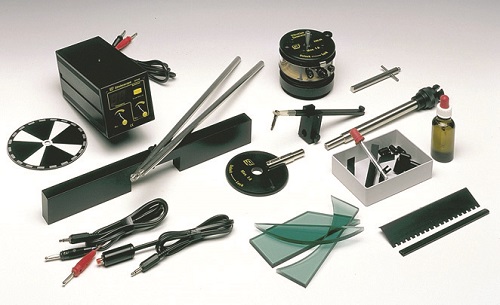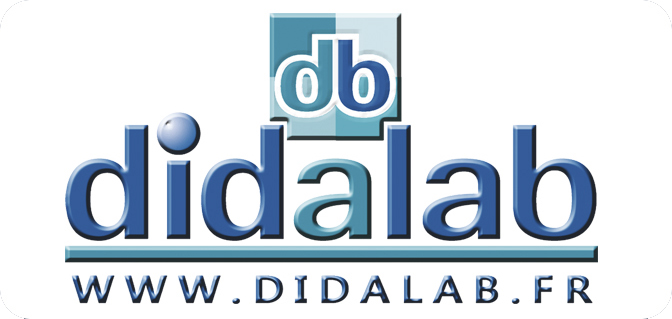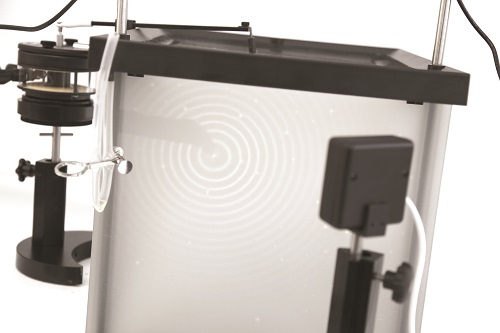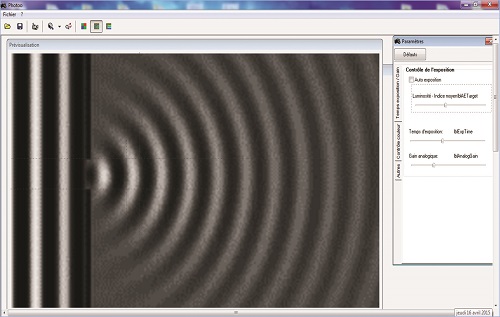Flat waves and diffractional principle: EXP100110
Référence : exp 100 110

The ripple tank is an ideal demonstration tool. Using this new system digitised by Webcam, the ripple tank can now be used with interactive charts and video projectors. This simple, intuitive software allows rapid implementation of measurements via cursors, and can thus be used for hands-on exercises to take accurate measurements. The ripple tank makes all wave phenomena accessible and understandable to students: flat waves, diffraction, interferences. Everything can be proved.
REFLECTION
The aim of this activity is to study reflection of a flat wave on various obstacles: a straight barrier and a curved barrier.
A ray is a straight line indicating the direction of a flat wave. Wave fronts are perpendicular to the ray. When a wave is reflected
on a surface, the angle of incidence (angle between the incident ray and the surface normal) is equal to the angle of reflection
(angle between the reflected ray and the surface normal).
For this experiment, we shall use two of the ripple tank accessories and the plane exciter.
The reflections will be viewed on the software.
DIFFRACTION
Still using the plane exciter, this activity aims at determining how the diffraction phenomenon develops when slit width (space between barriers) is adjusted or when wavelength changes. When a flat wave front passes through a slit, a new circular wave front is created. If the slit is wide compared with the wavelength, the new circular wave front will tend to become a flat wave front. If, however, the slit is small compared with the wavelength, the part of the flat wave front passing through the slit will form a circular wave front. This phenomenon is called diffraction.
INTERFERENCES
The aim of this activity is to determine how the “wave interference” formed by 2 slits or by 2 sources of excitation changes when slit width or wavelength changes. When a flat wave front crosses 2 slits, the new wave front generated behaves as though there were 2 punctual excitation sources. The circular waveforms leaving the 2 slits interfere with each other, constructively or destructively. Where d is the space between the 2 slits, è the angle between the 2 maximum intensity positions, and ë the wavelength.
SUBJECTS APPROACHED
»»Standing ultrasonic waves
»»Air ultrasonic absorption
»»Diffraction via a single slit or an edge
»»Interferences via a dual slit
»»Determining wavelength
»»Interferences with two coherent sources
»»Reflection
NECESSARY EQUIPMENT
| Reference | Description | quantity | | PHM022960 | Ripple tank | 1 | | POD010030 | Pedagogical Webcam | 1 | | POD002193 | Half-moon stand | 2 |
Computer is required for the Webcam
|
|




